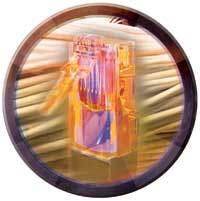In a move that had been anticipated for years, the specifications for 10-Gigabit Ethernet (10-GbE) transmission over twisted-pair copper cabling-formally known as IEEE Std 802.3an-2006-were approved in June. The finalization of those specifications marked the milestone end of the 802.3an committee’s work on the project, but from an entirely different perspective, it is just the beginning.
Those of you who want to deploy 10GBase-T in any environment, including data centers and local area network backbones, will benefit from useful and practical tips that can help you do so.
The intention of this month’s three-part Special Report is to do exactly that-provide information that can arm cabling-system designers, installers, and users with information that can help prepare for the complicated tasks of choosing, deploying, and maintaining a 10-GbE network and, importantly, its cabling infrastructure.
• The report opens with Structured cabling essentials for the 10GBase-T network, from industry veteran Paul Kish, who dissects the issue from the viewpoint of what it takes, electronically, for a cabling system to successfully transmit bits at the rate of 10 billion per second. The article discusses the installed base of unshielded twisted-pair cabling by category, and sizes up the ability of each to support 10GBase-T. Kish also discusses installation and maintenance workmanship issues, which will take center stage with this protocol much more than they have for any of its predecessors.
• The second article, Performance is everything: The standards for 10GBase-T, serves as a bridge between the one that precedes it and the one that follows, discussing what many consider to be the very bedrock of the structured cabling systems market today-standards. Robert Dennelly discusses the activities of the TIA to specify the necessary characteristics of Category 6 and Category 6A structured cabling systems to support 10GBase-T. Additionally, he takes the lid off the can of worms that is the testing criteria required for Category 6A cabling systems.
• Hugo Draye goes into significant detail about those testing criteria in the final article, Testing guidelines for 10-GbE over twisted pairs. The professionals who test installed structured cabling systems are in uncharted territory with 10GBase-T because, for the first time, they must characterize the effects of alien crosstalk. Test-equipment manufacturers are equally challenged to develop the technology to accomplish that characterization. For years, technicians have gotten used to the “autotest” button on whatever cabling-system tester they used. The rules have changed drastically with the onset of 10GBase-T. (While the article’s author represents one of the several test equipment manufacturers in the industry, it is vital to remember that each test equipment company employs its own patented technology in its products and processes.
It’s our hope that you will discover concrete information here that will help you decide-now, or in the future-whether and how to deploy 10GBase-T.PATRICK McLAUGHLIN is the chief editor of Cabling Installation & Maintenance.

